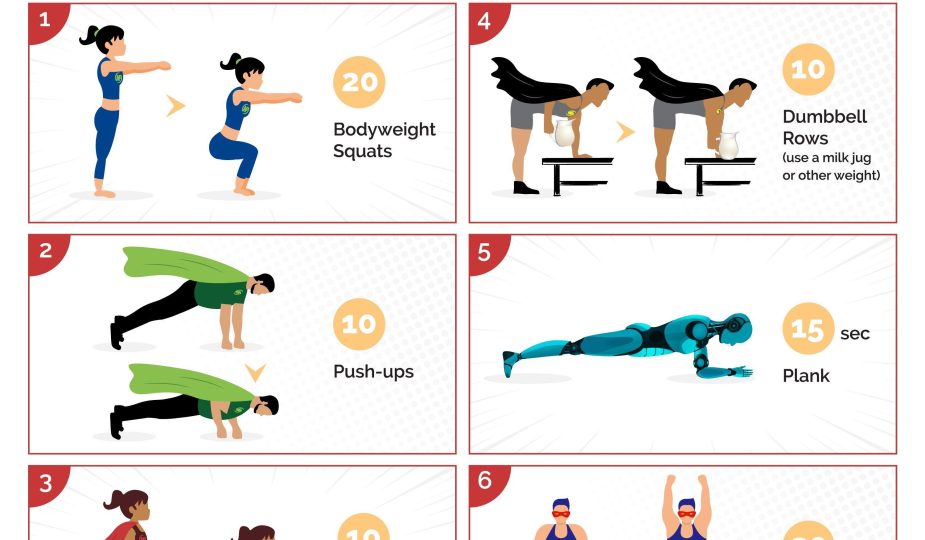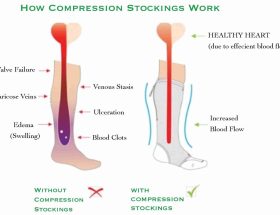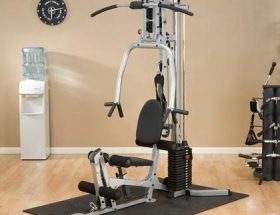In recent years, bodyweight training has gained immense popularity in the fitness world. This form of exercise requires no fancy equipment or expensive gym memberships, making it accessible to people of all fitness levels. Bodyweight circuit training, in particular, offers a dynamic and intense full-body workout that challenges both strength and cardiorespiratory endurance.
The Basics of Bodyweight Circuit Training
Bodyweight circuit training involves performing a series of exercises back-to-back with minimal rest in between. The goal is to keep the heart rate elevated throughout the entire workout for maximum calorie burn. This style of training is highly efficient, as it combines strength, cardiovascular, and muscular endurance exercises into a single routine.
Benefits of Bodyweight Circuit Training
1. Convenience and Accessibility: As mentioned earlier, bodyweight circuit training can be done anywhere without the need for equipment. This makes it a perfect choice for those who want to exercise at home, in a park, or while traveling.
2. Time-Efficient: With busy schedules becoming the norm, finding time to exercise can be challenging. Bodyweight circuit training offers a solution as it can be completed in a short amount of time. A 20-30 minute session can provide a highly effective full-body workout.
3. Strength Development: Bodyweight exercises such as push-ups, squats, and lunges engage multiple muscle groups simultaneously, leading to improved overall strength and functional fitness.
4. Cardiovascular Fitness: The continuous nature of circuit training keeps the heart rate elevated, contributing to improved cardiovascular endurance. This form of training can help increase lung capacity and boost overall fitness levels.
5. Fat Loss and Muscle Tone: Bodyweight circuit training is an excellent choice for those aiming to shed excess body fat and build lean muscle. The combination of strength and cardio exercises, along with the metabolic demands of circuit training, leads to a higher calorie burn and improved muscle definition.
A Sample Bodyweight Circuit Routine
Below is a sample bodyweight circuit routine that targets all major muscle groups:
Warm-Up
Jumping Jacks – 1 minute
High Knees – 1 minute
Bodyweight Squats – 1 minute
Circuit
Perform each exercise for 30 seconds, then move on to the next exercise. Rest for 30 seconds between exercises. Repeat the circuit 3-4 times.
Push-Ups
Squat Jumps
Mountain Climbers
Plank Hold
Lunges
Bicycle Crunches
Cool Down and Stretching
Finish the workout with a few minutes of light cardio, such as jogging or walking, followed by static stretches targeting the major muscle groups.
Tips for a Successful Bodyweight Circuit Training
Focus on Proper Form: Pay attention to your posture and technique to maximize the effectiveness of each exercise and minimize the risk of injury.
Progress Gradually: Start with easier variations of exercises and gradually increase the intensity as your strength and fitness level improves.
Listen to Your Body: If an exercise feels too challenging or causes discomfort, modify or replace it with an alternative movement that suits your abilities.
Stay Hydrated: Remember to drink water before, during, and after your workout to stay properly hydrated.
Include Rest Days: Allow your body to recover and adapt by incorporating rest days into your training schedule. This will help prevent burnout and reduce the risk of overuse injuries.
Conclusion
Bodyweight circuit training is an efficient and accessible way to challenge your entire body. This form of exercise offers numerous benefits, including improved strength, cardiovascular fitness, and body composition. Whether you are a beginner or an experienced athlete, bodyweight circuit training can be modified to suit your abilities and goals. So, why not give it a try and experience the amazing effects of this full-body workout?







